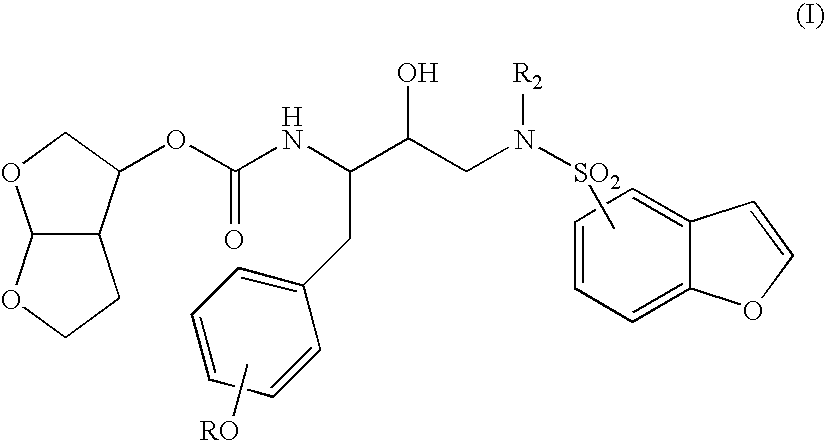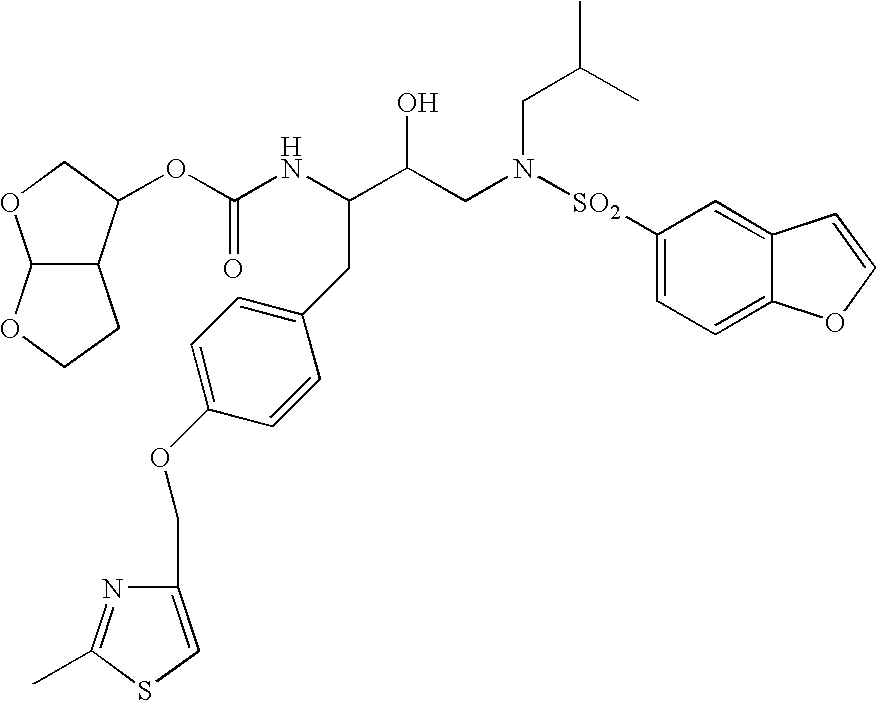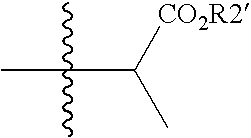Benzofuran derived HIV protease inhibitors
a technology of hiv protease inhibitor and benzofuran, which is applied in the field ofbenzofuran derived hiv protease inhibitor, can solve the problems of severe compromising of the immune system, neurological deterioration, and death of the infected individual, and achieve the effect of improving the pharmacokinetics
- Summary
- Abstract
- Description
- Claims
- Application Information
AI Technical Summary
Benefits of technology
Problems solved by technology
Method used
Image
Examples
Embodiment Construction
[0041]The invention provides novel retroviral protease inhibitors. More specifically, the invention provides compounds that are active against a wide cross-section of HIV strains. These compounds may be used for treating HIV / AIDS either alone, or in combination with other anti-HIV medicaments. In particular, the compounds have improved pharmacokinetic properties, including enhanced bioavailability, compared to previously known compounds. The compounds may be used either as a sole protease inhibitor or in combination with one or more different protease inhibitors, or with additional compounds that inhibit degradation of the inhibitor(s), thereby maintaining intracellular concentrations of the protease inhibitor(s) at a therapeutic level for a sustained period of time. Advantageously, patients treated under such a regimen also receive therapeutic doses of other anti-HIV medicaments such as reverse transcriptase inhibitors, cell fusion inhibitors and the like.
[0042]The term “pharmaceut...
PUM
| Property | Measurement | Unit |
|---|---|---|
| temperature | aaaaa | aaaaa |
| apparent viscosity | aaaaa | aaaaa |
| particle size | aaaaa | aaaaa |
Abstract
Description
Claims
Application Information
 Login to View More
Login to View More - R&D
- Intellectual Property
- Life Sciences
- Materials
- Tech Scout
- Unparalleled Data Quality
- Higher Quality Content
- 60% Fewer Hallucinations
Browse by: Latest US Patents, China's latest patents, Technical Efficacy Thesaurus, Application Domain, Technology Topic, Popular Technical Reports.
© 2025 PatSnap. All rights reserved.Legal|Privacy policy|Modern Slavery Act Transparency Statement|Sitemap|About US| Contact US: help@patsnap.com



